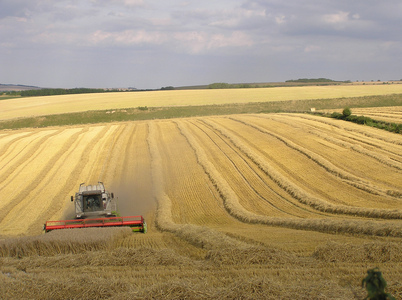Benefits and Challenges of Commercial Farming vs Subsistence Farming Described
Benefits and Challenges of Commercial Farming vs Subsistence Farming Described
Blog Article
Checking Out the Differences In Between Commercial Farming and Subsistence Farming Practices
The duality in between business and subsistence farming methods is marked by varying objectives, functional scales, and source use, each with profound ramifications for both the environment and society. Conversely, subsistence farming stresses self-sufficiency, leveraging conventional approaches to sustain household needs while nurturing neighborhood bonds and cultural heritage.
Economic Purposes
Economic objectives in farming techniques typically determine the approaches and scale of operations. In business farming, the primary economic objective is to take full advantage of earnings.
On the other hand, subsistence farming is predominantly oriented towards meeting the prompt demands of the farmer's household, with surplus production being marginal. The financial objective here is commonly not benefit maximization, yet instead self-sufficiency and danger minimization. These farmers typically run with minimal sources and rely upon typical farming techniques, customized to regional ecological problems. The key goal is to ensure food safety and security for the house, with any excess fruit and vegetables marketed locally to cover standard requirements. While business farming is profit-driven, subsistence farming is centered around sustainability and resilience, showing a basically different collection of economic imperatives.

Scale of Operations
The distinction between industrial and subsistence farming becomes specifically obvious when taking into consideration the scale of operations. The scale of industrial farming permits for economic situations of scale, resulting in reduced costs per system via mass manufacturing, enhanced performance, and the capability to spend in technical developments.
In stark contrast, subsistence farming is typically small-scale, focusing on generating simply enough food to satisfy the instant demands of the farmer's household or local neighborhood. The land area entailed in subsistence farming is commonly restricted, with much less access to contemporary innovation or automation.
Source Usage
Resource application in farming methods discloses substantial distinctions between industrial and subsistence approaches. Industrial farming, characterized by large procedures, commonly uses sophisticated innovations and mechanization to enhance making use of sources such as land, water, and plant foods. These methods permit improved performance and higher efficiency. The emphasis is on optimizing outputs by leveraging economic situations of scale and releasing resources tactically to make sure regular supply and profitability. Accuracy agriculture is progressively embraced in business farming, utilizing data analytics and satellite modern technology to monitor plant health and wellness and maximize source application, additional boosting yield and resource efficiency.
In contrast, subsistence farming runs on a much smaller sized range, mostly to meet the instant requirements of the farmer's house. Source usage in subsistence farming is usually restricted by economic constraints and a dependence on traditional techniques.
Ecological Impact

On the other hand, subsistence farming, exercised on a smaller sized range, typically utilizes standard strategies that are more attuned to the surrounding setting. Plant turning, intercropping, and natural fertilization are common, advertising soil health and reducing the requirement for synthetic inputs. click for more While subsistence farming normally has a lower ecological footprint, it is not without difficulties. Over-cultivation and bad land administration can result in soil disintegration and deforestation in some situations.
Social and Cultural Implications
Farming techniques are deeply intertwined with the cultural and social textile of areas, influencing and reflecting their worths, customs, and economic structures. In subsistence farming, the emphasis is on growing enough food to fulfill the immediate needs of the farmer's family members, commonly cultivating a solid sense of community and shared responsibility. Such methods are deeply rooted in neighborhood traditions, with expertise passed down via generations, therefore protecting cultural heritage and reinforcing common connections.
Alternatively, business farming is largely driven by market needs and productivity, often leading to a shift in the direction of monocultures and large procedures. This method can cause the erosion of conventional farming methods and cultural identities, as neighborhood personalizeds and expertise are replaced by standardized, industrial approaches. The focus on efficiency and profit can occasionally lessen the social communication located in subsistence neighborhoods, as economic deals replace community-based exchanges.
The duality in between these farming methods highlights the more comprehensive social effects of agricultural options. While subsistence farming sustains social connection and community interdependence, business farming lines up with globalization and financial growth, frequently at the expense of traditional social structures and social variety. commercial farming vs subsistence farming. Stabilizing these facets stays a crucial challenge for lasting agricultural advancement
Verdict
The evaluation of business and subsistence farming practices reveals significant differences in goals, scale, resource usage, ecological effect, and social implications. Conversely, subsistence farming stresses self-sufficiency, utilizing conventional methods and regional resources, thus promoting social preservation and area cohesion.
The duality between business and subsistence farming methods is noted by differing purposes, operational ranges, and resource application, each with profound implications for both the setting and society. While industrial farming is profit-driven, subsistence farming is centered Read Full Article around sustainability and durability, reflecting an essentially different collection of economic imperatives.
The difference between business and subsistence farming ends up being specifically noticeable when taking into consideration the scale of operations. While subsistence farming sustains cultural connection and area interdependence, business farming aligns with globalization and economic development, typically at the price of traditional informative post social frameworks and social diversity.The examination of commercial and subsistence farming methods discloses significant differences in purposes, range, resource use, ecological influence, and social implications.
Report this page